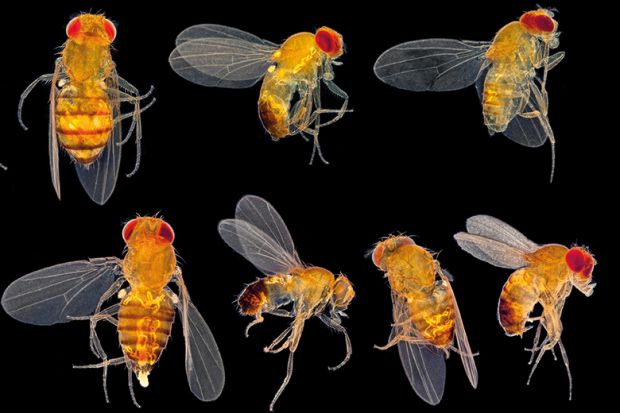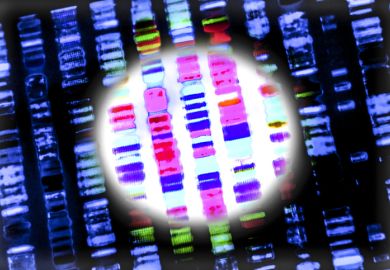For 30 years, I have been studying the nervous system: how it is formed during development and then maintained during ageing. I investigate this topic in the fruit fly Drosophila melanogaster, the tiny creature that hovers over our fruit baskets in summer. Non-scientists hearing about my work with this inconspicuous insect tend to respond with disbelief. But so do surprisingly many fellow biologists and clinical researchers – evidently oblivious to the fact that their own research fields were often born out of discoveries made “first in fly”.
This lack of awareness is taken on in Stephanie Mohr’s book. It describes how flies became an object of scientific study, and how a century of intense fly research made Drosophila the best understood animal on earth. It also explains how concepts deduced from fly research have been instrumental in laying the basis of modern biology and biomedical sciences.
Each section is introduced by fundamental thoughts about relevant aspects of biology, followed by an explanation of how flies helped to pioneer a particular field and what further impact this had on biomedical science. The reader learns how flies taught us about the organisation of genes on chromosomes, the nature of gene mutations and how those mutations turned into tools to dissect the processes underlying biology. Detailed examples include seminal studies of development and ageing, cell biology, immunology, neurobiology and even behaviour.
Woven into this flow is the game-changing realisation, towards the end of the past century, that fly genes and the fundamental aspects of biology that they drive are often well conserved in evolution. The book illustrates clearly how these common genetic roots can be capitalised on in utilising fly research to investigate biological aspects of human disease and direct medical research. Testing drugs on Drosophila is a cost-effective yet meaningful way of pre-screening for positive and negative effects. Each section of the book concludes with a beautifully written, visionary prophecy about future prospects, often supported by concrete examples (most prominently in the “Coordination” section) of how this could work.
Explaining fly research involves a complex mix of historical facts, laboratory realities and research tools and strategies. Although all this is well covered in the book, I feel that this information should have been put entirely in the introduction. In the first sections, I sensed some uncertainty about the intended target audience, and careful explanations aimed at lay readers were occasionally interspersed with less accessible specialist vocabulary or concepts. The generic section titles did not appeal to me, with sections on “Communication”, “Direction” and “Difference” not working very well to present the breadth of mechanisms that determine the fate and organisation of cells (and sidelining the powerful example of the Notch gene was a missed opportunity).
But setting aside these personal points, the book is an inspiring read that improves from chapter to chapter. It is loaded with relevant, thought-provoking and well-researched information, clearly illustrating the important role of past and present fly research and providing a vision for the future. For its original approach, it deserves a place on the bookshelves not only of fly researchers but of all who care about responsible biomedical research.
Andreas Prokop is professor of cellular and developmental neurobiology at the University of Manchester. He promotes Drosophila research via the Manchester Fly Facility and droso4schools initiatives.
First in Fly: Drosophila Research and Biological Discovery
By Stephanie Elizabeth Mohr
Harvard University Press
270pp, £25.95
ISBN 9780674971011
Published 30 March 2018
后记
Print headline: Tiny wings lift lid on mystery of life




